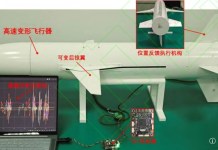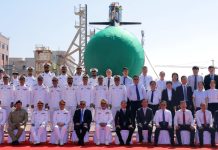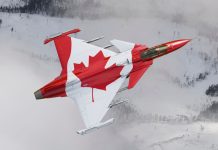A delegation from China is in Argentina to pitch JF-17 Thunder jets for its air force. The delegation, as per reports, is keen to sell 12 JF-17 fighters in the coming days, against the Russian offering of MiG-35s.
The Argentine Air Force has been looking for a new supersonic fighter jet following the retirement of its Dassault Mirage III fleet in 2015, after which it is left with only A-4 light attack aircraft.
For this, Buenos Aires had reached out to South Korea for its F/A-50 lightweight fighter jets in 2019 and was close to finalizing the contract, but was then refused due to the UK blocking it on the grounds of an arms embargo, as the aircraft features various British components, including Martin-Baker ejection seats.
Argentina’s quest for a new fighter jet began in 2013 when it originally sought the Spanish Air Force’s Dassault Mirage F-1s. After the deal fell through, the country looked for Israeli Kfirs, and then subsequently included Russian and Chinese competitors as well in 2014.
However, the Argentine Air Force still wanted a western fighter jet, for which it began serious negotiations with Israel for Kfir Block-60 aircraft.
With the Kfir Block-60, IAI overhauled the fighter’s J79 turbojet to zero hours and upgraded it with modern subsystems, including the EL/M 2052 active electronically scanned array (AESA) radar. Argentina was in talks with Israel for 12-14 aircraft, but in 2017, the Argentine Ministry of Defence (MoD) announced it suspended those plans.
Argentina Turns To Russia, China
After being rejected for the F/A-50s due to the Arms embargo, the country decided for a natural push for other offerings from China and Russia. The current situation has left Argentina with only two options, to either go for the JF-17 or the Russian MiG-35.
SU-35 vs MIG-35: Two Russian Jets Compete Against Each Other For Lucrative MMRCA Contract
However, going for the Sino-Pakistani JF-17 Thunder could be a more feasible choice for the Argentine government, for three main reasons.
Firstly, the Argentine air force has been looking for a lightweight single-engine fighter jet. This clearly isn’t the case for MiG-35, which is a twin-engine multirole fighter, clearly heavier than the JF-17 or F/A-50.
Secondly, the cost. The Russian aircraft come with a hefty price tag, along with more maintenance and operating costs. This brings the Argentine government closer to the JF-17, a lightweight platform, which is combat tested and designed to operate with lower costs (evident with Pakistan’s own restrained defense budget and the aircraft’s price).
Last but not the least, the Argentine government might not want to get into another embargo from the United States over the possible imposition of Countering America’s Adversaries Through Sanctions Act (CAATSA) by dealing with Russia.
The JF-17 has become a relatively successful fighter jet in the international market, with exports to Myanmar and Nigeria. Pakistan is also in talks with Malaysia, Azerbaijan, Morocco, Qatar, Sudan, and Sri Lanka among other countries for the JF-17 Block III, clearly emerging as a combat aircraft of choice for developing countries with relatively weaker economies.




